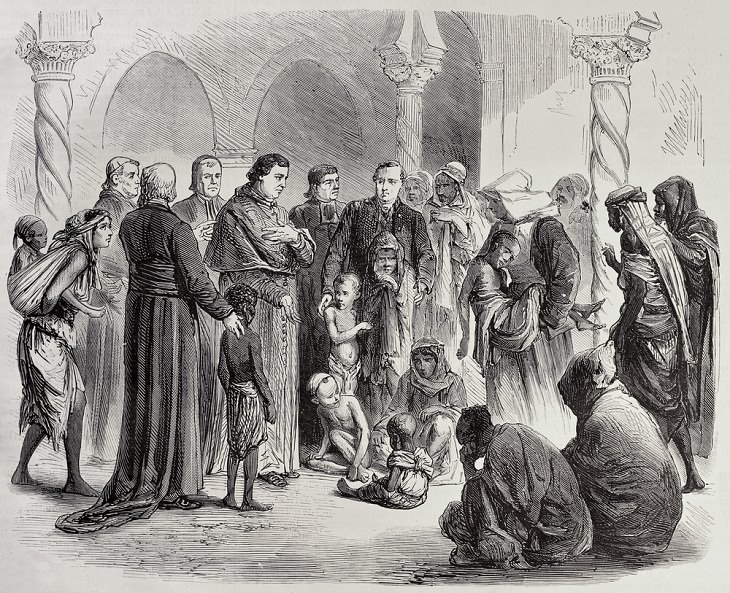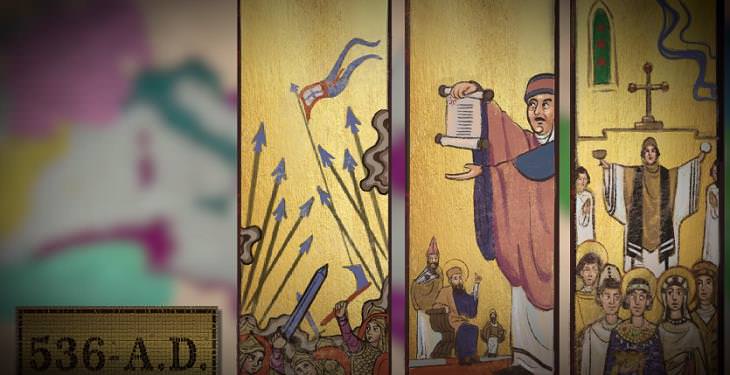So, why is the year 536 considered to be so bad? If not 2020, what about 1918, the year of the Spanish Flu that killed close to 100 million people worldwide? Then, there was also the Black Death of 1349, a horrifying global epidemic of bubonic plague that caused an estimated 20 million deaths across Europe and Asia.
What makes 536 even more dreadful and deadly?
It was a combination of many events - from a catastrophic volcanic eruption to climate change, death, and famine. The Medieval historian Michael McCormick stated that “it was the beginning of one of the worst periods to be alive, if not the worst year.”
Researchers say that the devastation in 536 AD began with a volcanic eruption in Iceland. Records show that the resulting debris and ash from the eruption led to a strange dense fog that engulfed Europe, the Middle East, and parts of Asia into an 18-month-long period of total darkness.
Since the fog had blocked the sun, it caused the temperatures to fall dramatically and resulted in the coldest decade of the past 2,000 years. Summers in Europe and Asia that year became 1.6°C to 2.7°C colder. China even reported summer snow.
The Byzantine historian Procopius wrote this about the episode, "For the sun gave forth its light without brightness, like the moon, during the whole year." He also stated that it looked like the sun was always in eclipse and that “men were free neither from war nor pestilence nor any other thing leading to death.”
Then, a Roman politician Cassiodorus wrote that the sun had a “bluish” color and the seasons appeared to be all jumbled up together. “We marvel to see no shadows of our bodies at noon,” he wrote.
Initially, these observations weren’t taken too seriously by modern historians. But when researchers began studying tree rings in Ireland, they found that summers around the year 540 were indeed unusually cold. When a volcano erupts, it throws up substances like sulfur, bismuth, and other chemicals high into the atmosphere. Once there, these substances form an aerosol veil, which reflects the sun's light back into space, thus cooling the planet.
Upon examining samples dating to the spring of 536, researchers discovered two microscopic shards of volcanic glass that were later found to be from Iceland. They now believe that these shards, which appeared to have traveled extensively, are evidence that a massive volcanic eruption did indeed take place in 536, causing a gigantic ash storm over the Northern Hemisphere and engulfing the skies for well over a year.
"Iceland is a lot closer to Britain and Northwest Europe than California, which means that the impact of this eruption at the time on climate in these areas would have been much greater than previously thought," says Christopher Loveluck, an archeologist at the University of Nottingham, in the UK, who was studying the samples.
Also, according to Andrei Kurbatov, an Earth and climate sciences professor at the University of Maine, there might well have been other undiscovered volcanic eruptions that could have contributed to the severity of the fog in 536.
There was more misery to follow

The volcanic fog in 536 didn’t just result in dark days. The explosion was so severe that it adversely modified the global climate and even affected crop cultivation for many years to come. The poor crop yields, particularly in places like Ireland, Scandinavia, Mesopotamia, and China, led to starvation, famine, and large-scale deaths.
To make matters worse, two more devastating volcanic eruptions in 540 and 547 caused further damage, particularly in Europe, where the temperatures dropped severely again. The combined pollution from these volcanic eruptions, according to historians, is expected to have caused a period of massive death, starvation, and decline in Europe. In fact, it took a long time for the entire Northern Hemisphere to recover from the impact of the events in 536.
See Also: History's Deadliest Epidemics That Shook The World
So, while there have been several calamitous years throughout history, including 2020, the events of 536 and its long-lasting ramifications were indeed far too grave. Of course, the absolute worst time in history also depends a lot on your perspective. However, a time when people literally didn’t even have a ray of sunshine to look up to for about two years does indeed sound unimaginably gloomy.
Cover image source: Wikimedia Commons
Share this post with friends and family...



